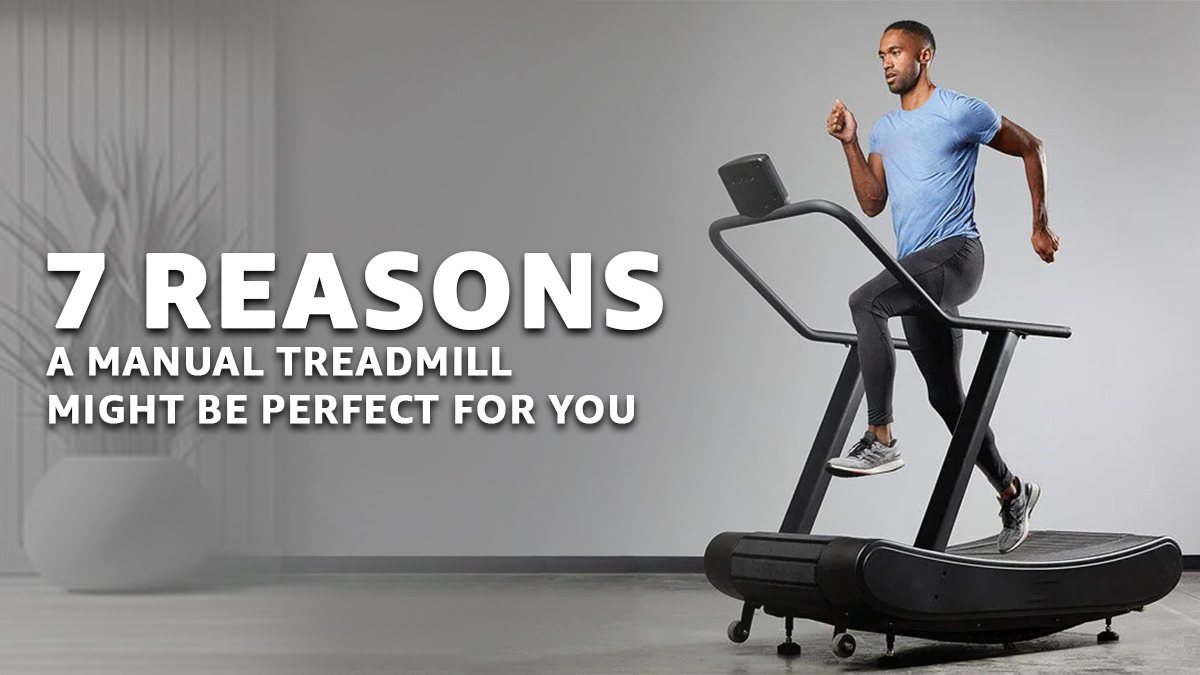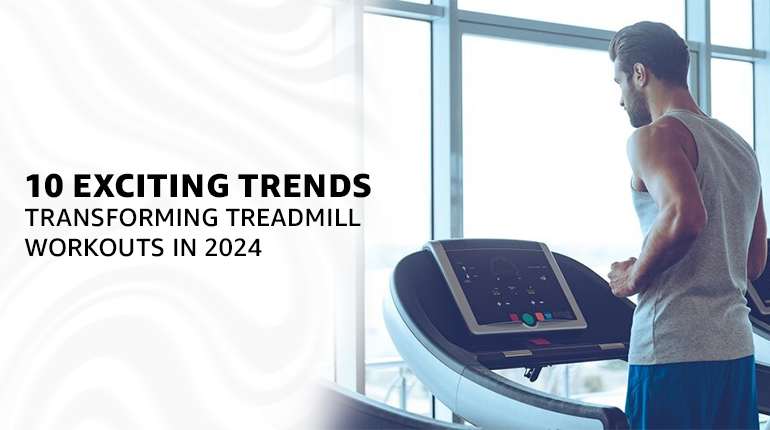7 Reasons a Manual Treadmill Might Be Your Perfect Fitness Companion

In the world of fitness, a manual treadmill stands out as a great option for those who want to work out at home without breaking the bank or sacrificing space. They are easier to store, making them an excellent choice for home gyms with limited space, and they don’t require a power source, adding to their convenience.
Manual treadmills come in two main types: Curved and flat-belt manual treadmills. Curved manual treadmills feature a concave running surface, allowing users to control their pace. The curve promotes a more natural stride, engaging more muscles and potentially reducing joint impact. On the other hand, flat-belt manual treadmills, the more traditional design, have a flat running surface. While flat-belt treadmills may be simpler, curved models offer a dynamic, self-powered experience.

The beauty of a manual treadmill lies in its simplicity. Your pace and effort control the speed, providing a personalized and motivating workout. In this exploration of manual treadmills, we’ll uncover their benefits, address potential considerations, and guide you on how to maximize your workout. If you’re on a budget and don’t mind a bit of extra effort, a manual treadmill might be the ideal fit for your home gym.
1. Simplicity in Design
One of the standout features of manual treadmills is their simplicity in design. Unlike their motorized counterparts, these treadmills operate solely based on the user’s movement. No complex electronics or motors are involved, making them user-friendly and easy to maintain. This simplicity appeals to those who prefer a straightforward, no-frills approach to their workout routine.
2. Cost-Effective Fitness
For budget-conscious fitness enthusiasts, manual treadmills present a cost-effective alternative to motorized options. The absence of expensive electronic components translates to a lower price point, making manual treadmills an attractive option for individuals looking to establish a home gym without breaking the bank. This affordability widens access to quality exercise equipment, promoting inclusivity in the realm of fitness.
3. Energy Efficiency
In an era where sustainability is a growing concern, manual treadmills shine as energy-efficient fitness solutions. Since they don’t rely on electricity, users generate the power needed for their workout. This not only reduces the environmental impact but also allows users to exercise anywhere, independent of power sources. The concept of generating energy while staying fit aligns with a broader movement towards eco-conscious living.
4. Control Over Pace

Manual treadmills offer users complete control over their pace and intensity. The belt moves in response to the user’s effort, allowing for a more intuitive and personalized workout experience. This hands-on approach appeals to individuals who prefer to set their rhythm, providing a sense of autonomy that can be invigorating and motivating during each session.
5. Muscle Engagement and Caloric Burn
One of the significant benefits of using a manual treadmill is the increased muscle engagement it offers. Unlike motorized treadmills, where the belt assists in movement, users of manual treadmills must propel the belt themselves. This additional effort activates more muscle groups, particularly in the lower body and core, resulting in a higher caloric burn compared to motorized alternatives. For those seeking a more challenging and efficient workout, manual treadmills provide an excellent solution.
6. Compact and Portable
Space constraints are a common concern for individuals considering home exercise equipment. Manual treadmills often boast a more compact and lightweight design compared to their motorized counterparts. Their portability makes them suitable for smaller living spaces, and the ease with which they can be folded and stored enhances their appeal for those with limited room.
7. Safety Features
Manual treadmills come with built-in safety features that resonate with users who prioritize injury prevention. The absence of a motor eliminates the risk of sudden speed changes, providing a more controlled environment. Additionally, users can stop instantly by ceasing their movement, reducing the likelihood of accidents. This safety-conscious design makes manual treadmills an attractive option, especially for seniors or those with safety concerns.
Cons of a Manual Treadmill
While researching manual treadmills, it becomes evident that there are factors that individuals must consider when determining if a manual treadmill aligns with their fitness goals and preferences. As with any fitness equipment, understanding both the pros and cons is essential for making an informed decision that caters to individual needs.
1. Joint Stress During Initial Stages
Struggling against the resistance of the stationary belt may exert pressure on the joints, which can be particularly harmful for individuals with knee or hip arthritis. Users may feel compelled to raise the incline to counteract this. It may not align with the users seeking a more controlled and joint-friendly exercise experience.
2. Lack of Features
Features such as pre-set programs, electronic incline adjustments, and personalized workout tracking may be absent in manual models. Users accustomed to the convenience and versatility of modern treadmill features may find the simplicity of manual treadmills lacking in comparison.
3. Limited Incline

Adjusting the incline on a flat-belt manual treadmill requires users to stop their workout, step off, and manually modify the incline setting. This inconvenience can disrupt the flow of a workout. Often, on a steep 10% incline level, many users are forced to grip the handles for stability. In contrast, curved-belt manual treadmills allow users to vary the incline by adjusting their foot placement without a complete stop.
4. Increased Exertion:
Using a manual treadmill demands greater physical effort from the user to initiate and maintain the belt’s movement, leading to potential fatigue. Especially during the initial push, it can be tiring and exhausting, impacting the overall workout experience.
Conclusion:
In conclusion, the decision to opt for a manual treadmill hinges on individual preferences, fitness goals, and lifestyle considerations. The benefits of simplicity, cost-effectiveness, energy efficiency, control over pace, enhanced muscle engagement, portability, and safety features collectively make manual treadmills a compelling choice for a specific demographic.
If you find joy in a more hands-on approach to your workout, appreciate the economic advantages, or simply seek a greener and more compact fitness solution, a manual treadmill might be the perfect fit for you. It’s advisable to assess your unique requirements and preferences before making a decision.
So, is a manual treadmill right for you? The answer lies in understanding your fitness goals, embracing the advantages they offer, and deciding if the simplicity and control they provide align with your vision of a fulfilling workout experience. Whatever your choice may be, remember that the journey to a healthier, more active lifestyle is a personal one, and finding the right tools to support that journey is key.
Also Read: Top 7 Treadmills Under 15000 – Quality on a Budget
Categories
Tags
Recent Posts

Top 10 Fitness Accessories You Didn’t Know You Needed
July 19, 2024
Treadmill vs. Running Outside: Which is Right for You?
July 13, 2024
DIY Treadmill Maintenance in Monsoon: Essential Checks to Keep It Running Smoothly
June 22, 2024
Best Treadmill Workouts for Weight Loss
June 14, 2024
